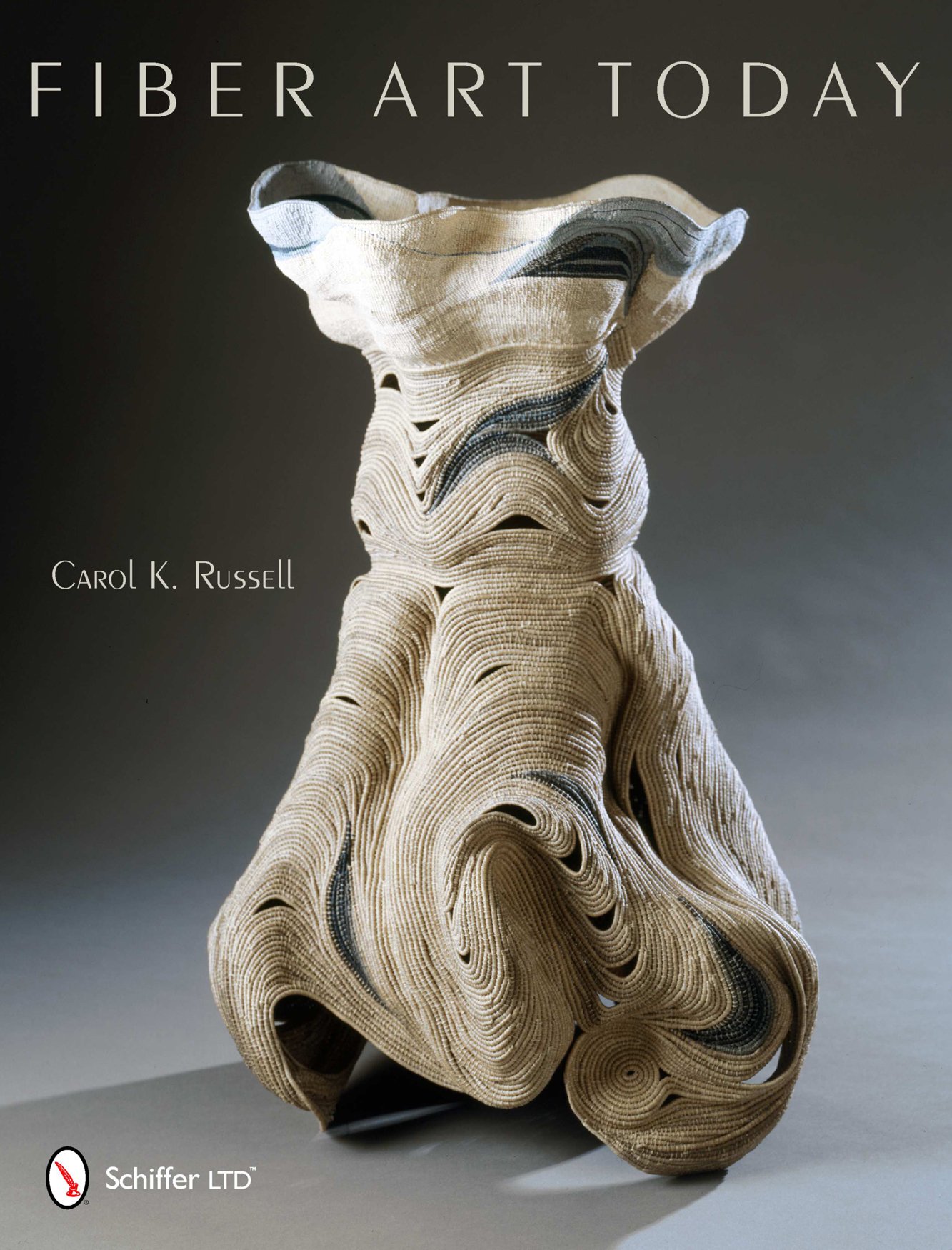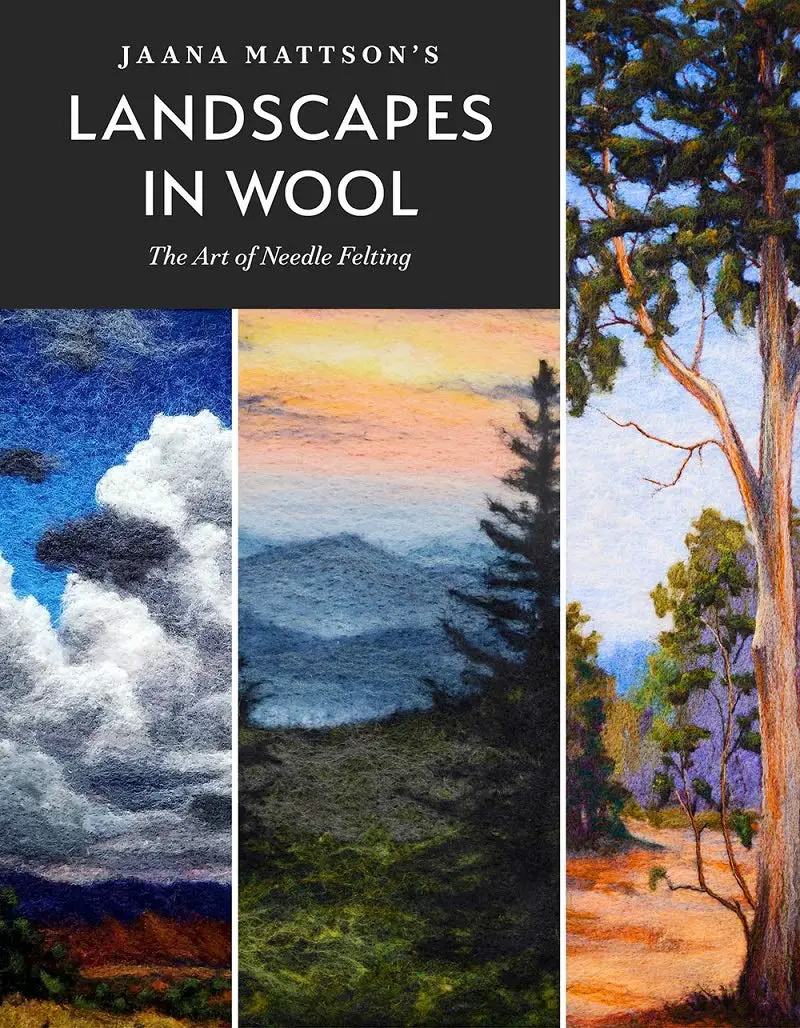
At Mr X Stitch we love to review textile art and embroidery books for you. There are so many great books to discover, packed with needlework inspiration and textile techniques, so we dive into each book to find out what’s good, what’s bad and let you know why you should pick it up.
Introduction
Fiber Art Today edited by Carol K.Russell is a contemporary textile art book, full of over three hundred images showcasing the current world of textiles and fibre art. This book challenges the meaning of fiber art and looks at both 3D and 2D artists. Each artist has their own section, which contains interesting information about their practice and the images chosen to illustrate their work. Many techniques are covered, such as those referencing looms, tapestry, quilting and embroidery.
About The Author
Carol K. Russell is an art curator and tapestry expert, she also teaches many textile art subjects. She has written books specifically on this technique. She also has a fascination with colour theory. Working from a loft in New Jersey, she writes and weaves her own pieces of textile art, taking inspiration from the countryside and coast which surrounds her. She describes herself as the editor of this book, as it does not contain her own work and comprises of a section of other artists who she has chosen and brought together.
Who Is This Book Aimed At?
Due to its hard back cover with replaceable sleeve, coupled with the quality of the photographs included both on the cover and inside, it will appeal to two types of readers. Firstly, those wishing to decorate their tables and who have no real experience in fiber art, yet can still appreciate its beauty as a creative skill. It will also excite those who are practicing artists and fuel their minds as a visual showcase of what is possible to achieve. As Russell states within the Acknowledgement section, this book is full of ‘art treasures’ which can be an ‘enlightening adventure’. For those studying art and textiles on a formal level, such as those progressing through a degree course, this book has plenty of contents to write about. The text may be arduous and lengthy on first glance, yet those who truly love art will take the time to portion off a section at a time, in order to take in the wealth of information and interpretation.
Contents
The book has been divided to allow each artist involved to have a few pages each. The pages briefly explain their practice and illustrate main works. This format is repeated for all the artists who have been selected.
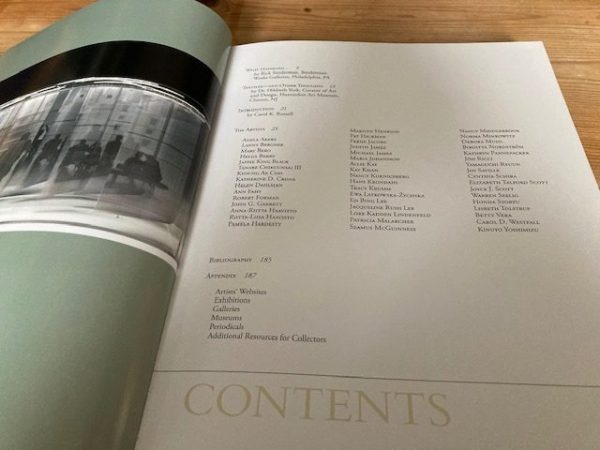
At the start of the book, Russell has introduced the subject matter and contents with a few pages of text…..
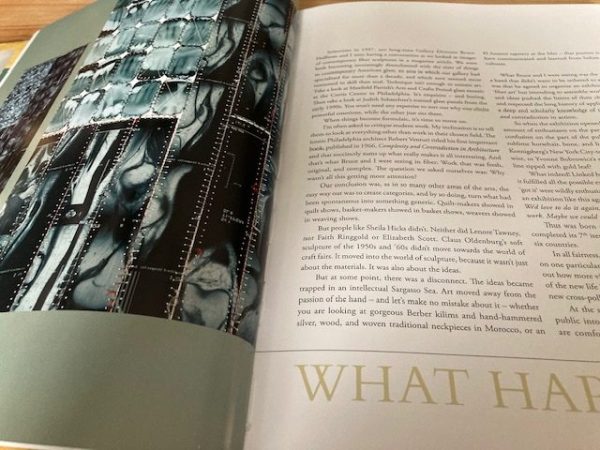
After that, we are led into the artists section…..
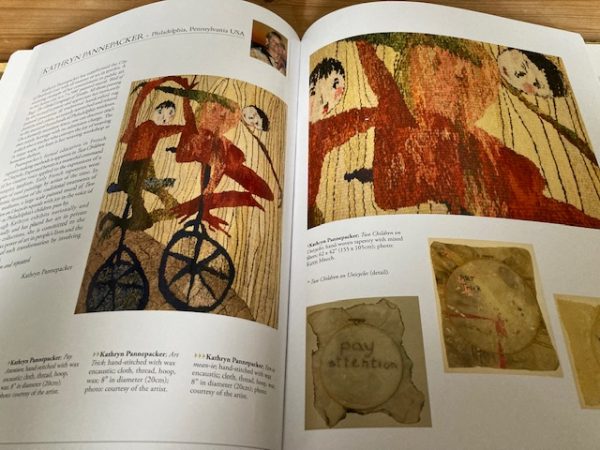
The images of the artists work are all so varied, which makes this book so interesting to look at never mind read. Often we will see the same piece, first photographed as a full piece (i.e the image shown above far left) then a section cut to zoom in on (i.e. see image above top right). I liked this feature, as it allows for closer observation of the stitches and pattern. As you can see, the images are all titled, with a brief description of the materials used. Again I liked this addition, without too much reading time we can read how the work has been made and with what materials.
The variety of techniques used is immense. Our attention spans cannot be worn down, as its all so different. One minute we will be reading about embroidery, the next a sculpture, heavily beaded in form. This gives the book an exciting feel, we can’t anticipate what the next page will hold when we turn over!
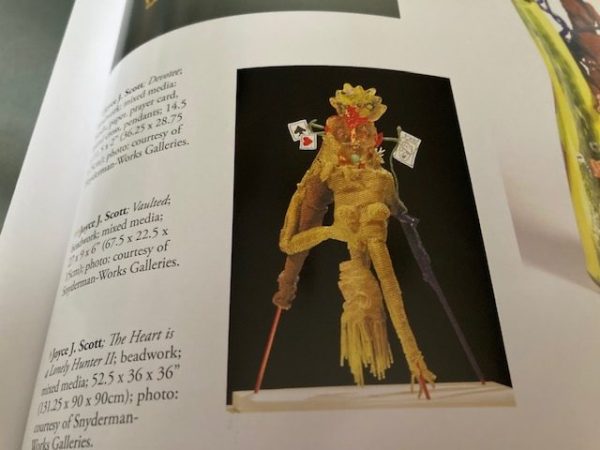
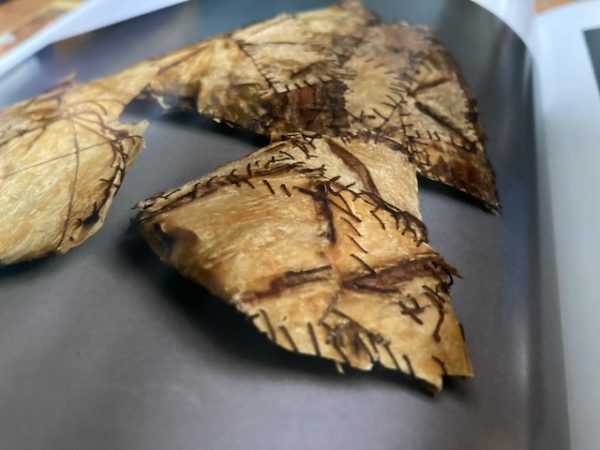
Although many pieces have been made using traditional materials, others have a more raw edge. Take for example the ‘dried guts’ used for the body of work in the image above. Fancy a go anyone?
Traditional materials have been used to create the embroidered portrait below, yet its been created in touch a one off unique manner. A twist on the staid needlework portrait.
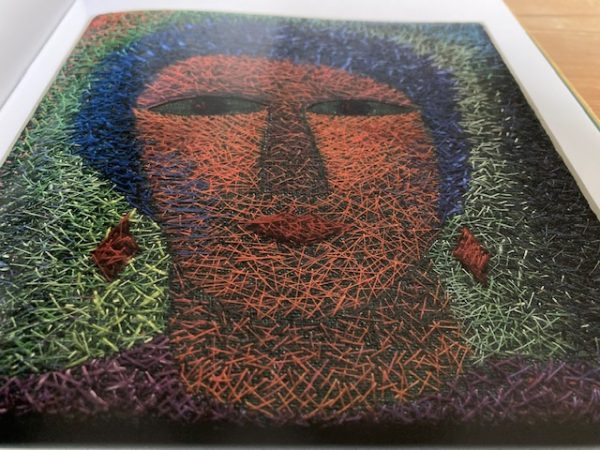
Although you might notice a few artists who use the same themes in their practice, i.e. faces, no repetition is felt as the artists each hold their own style.
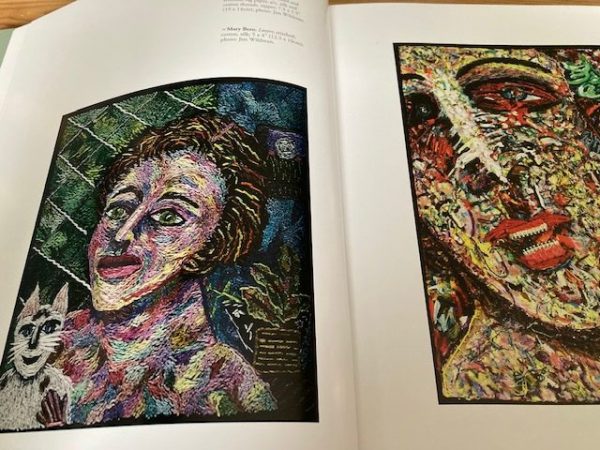
Photography
Each artists work has been illustrated simply, with no backgrounds in the photographs to blur our view. All the focus is on the artwork itself. I liked how larger images have been formatted to cover two pages.
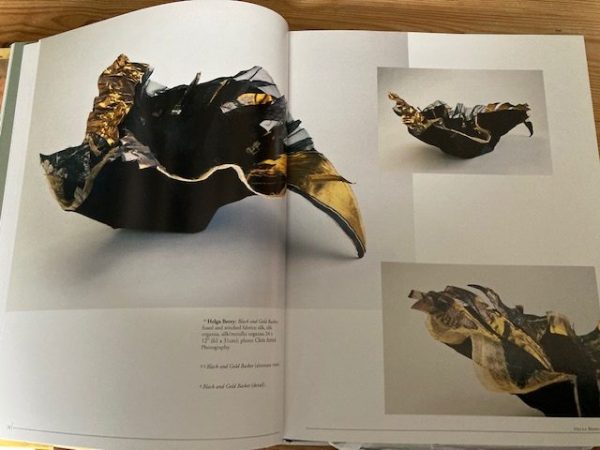
Anything Wrong With The Book?
This is no step-by-step technique book, it pulls apart fiber art and reveals its chameleon abilities as an art piece. There is nothing wrong with this book, it will just come down to personal choice.
Conclusion
Fiber Art Today will never go out of date, the pieces shown are timeless, not fashion related. Its beautiful photographs and in depth focus on many artists will have readers engaged time and time again.
If you enjoy fiber art, why not look at another of our book reviews, for example Jaana Mattson’s Landscapes in Wool: The Art of Needle Felting or if quilting is your thing, check out What Is An Art Quilt?

